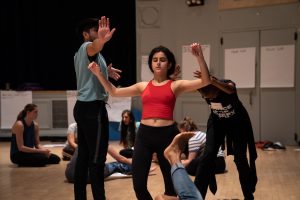 Art has been used to raise awareness and protest social injustices for years now. From Picasso’s Guernica (1937) to present day political artists such as Pussy Riot, a Russian feminist punk rock group, (https://www.widewalls.ch/
Art has been used to raise awareness and protest social injustices for years now. From Picasso’s Guernica (1937) to present day political artists such as Pussy Riot, a Russian feminist punk rock group, (https://www.widewalls.ch/
This past week Ann Biddle guided our class through various ways of researching social injustices and integrating both our findings and perspectives into our work. Whether our goal was to conduct an experiment, create a lesson plan, or choreograph a provocative piece, I learned of the power of dance and its ability to create a circumstance for participants to embody and/or empathize with the victims and their situation.
It is important to note that when dealing with social injustices, great care must be taken. You as an activist are dealing with the realities of others and they deserve accurate representation and genuine empathy. How to walk this fine line within a sea of grey was modeled both by Ann and our guest artists. Some key things to remember are to ALWAYS preface your relation to the situation, inquire as to your students relations and experience to the topic, and most importantly, quality “research is key,” (Victoria Murillo). (You wouldn’t want to create a social injustice within your lesson on one… baaaaad rabbit hole.)
Side Note: When dealing with trigger topics, expect and plan ahead for participants to have disagreements. If you plan to address social injustices frequently within your work, it is best to seek out training within peacebuilding and conflict resolution.
By the end of the week, participants were to put their newfound skills to work culminating in a final project. Some groups focused on presenting lesson plans, choreographic works, or conducted social experiments. My project partner and I created a dance piece concerning clinical addiction and the opioid crisis. Our research stemmed from personal witness and accumulating articles on the situation. After presenting our piece, a few participants shared their personal experience with the subject matter and how the work affected them. It was beautiful to see how dance can impact others and be used as both a platform and a voice to the voiceless. I plan to continue to develop this piece, as well as find non-profits to partner with. (Long story short, the way the pharmaceutical and insurance industries are designed, many patients are being prescribed pain medications vs physical therapy. Resulting in chronic pain patients and drug addicts.)
Here is a link to the latest version of the work! https://youtu.be/c45C6HnSK08
I am exhausted from this month of intensives (slept through most my weekend!!!) and unbelievably grateful for all I have learned.
Now is the time to go work. 🙂
